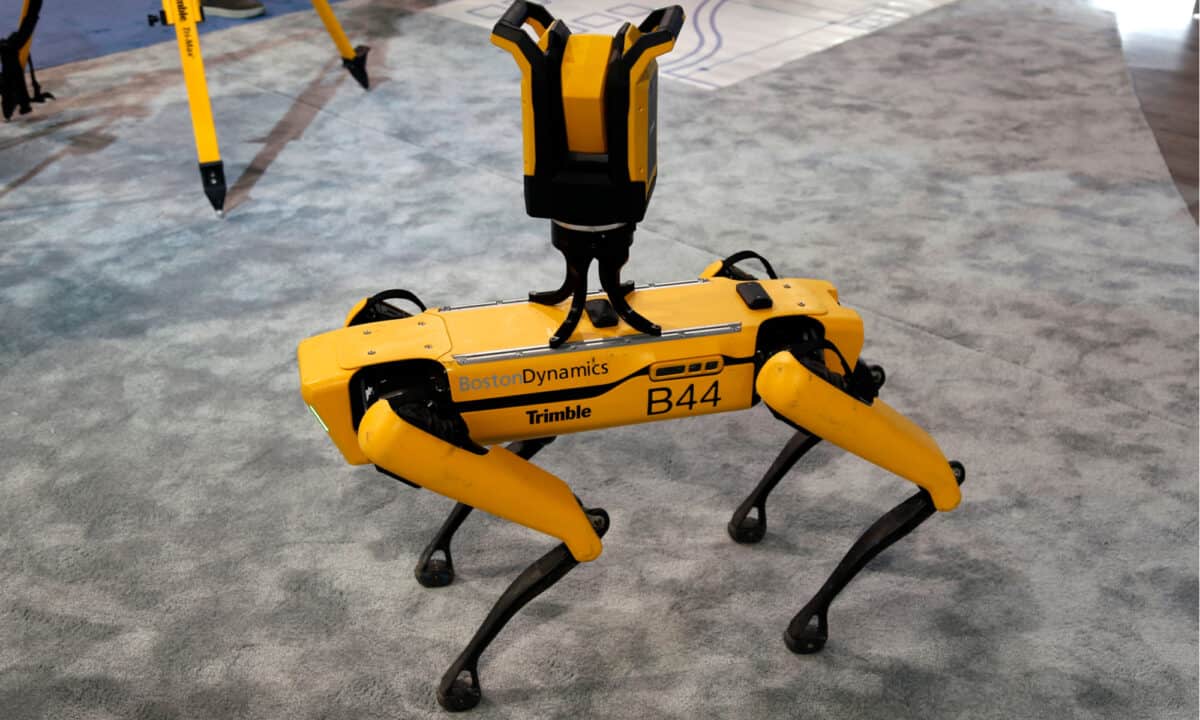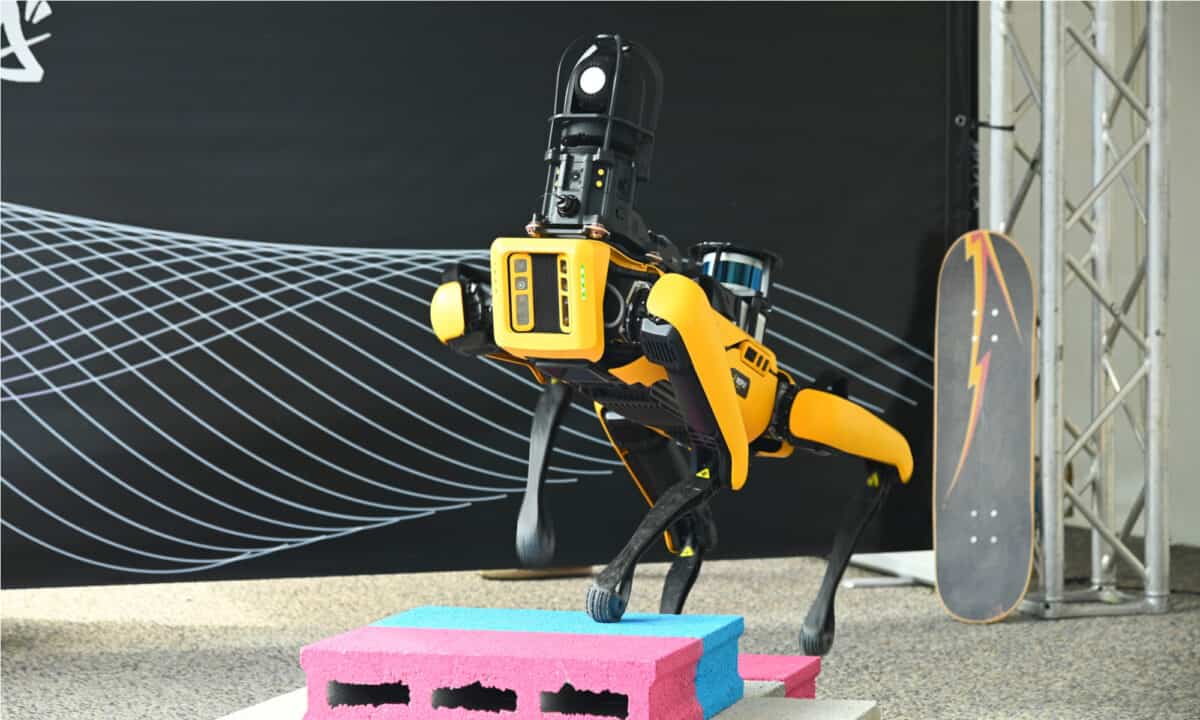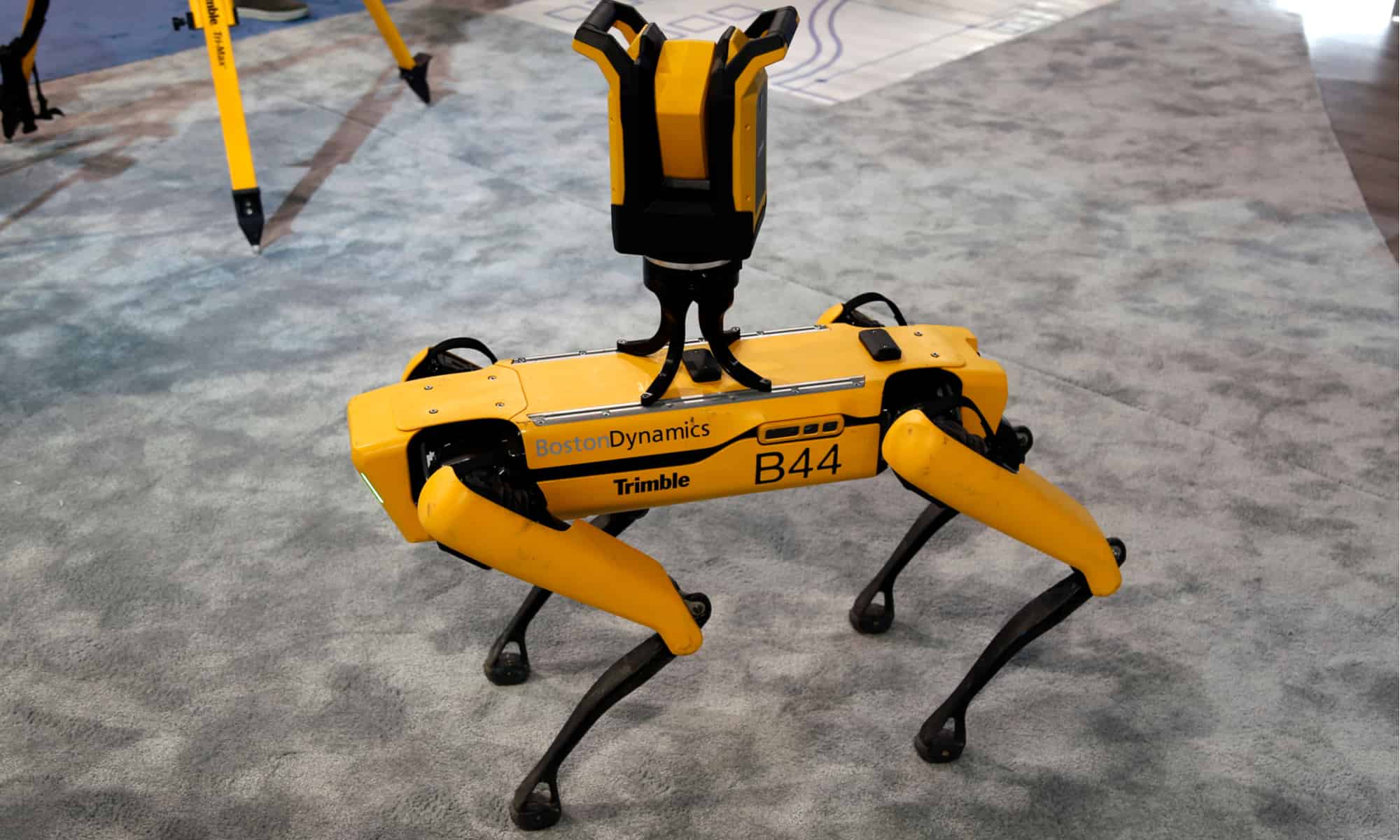The History of Boston Dynamics: What to Know
Boston Dynamics is a robotics company based in Waltham, Massachusetts. The company was formed in 1992 by Marc Raibert, a professor of Electrical Engineering and Computer Science at MIT, and an associate professor of Computer Science at Carnegie Mellon University.
Boston Dynamics is currently owned by Hyundai Motor Group, and they are mainly known for their robotic dogs and robotic arms. These robots have limitless potential, and Boston Dynamics continues to make progress in an already fast-paced industry.
Quick Facts
- Year Founded
- 1992
- Founders
- Marc Raibert
- Industry
- Robotics, Artificial Intelligence, and Automation
- Headquarter
- Waltham, Massachusetts
- Key People
- Marc Raibert
- Notable Products
- BigDog, Cheetah, LittleDog, PETMAN, LS3, Atlas, Spot, Handle, Stretch, pick, and the Factory Safety Service Robot
- Website
- https://www.bostondynamics.com/
The Founding of Boston Dynamics: How it Happened
Boston Dynamics was a spin-off from the Massachusetts Institute of Technology. The company started creating interactive 3D computer simulations for the Naval Air Warfare Center Training Systems Division. This led Boston Dynamics to several other U.S. military projects funded by the Defense Advanced Research Projects Agency (DARPA).
Boston Dynamics continued to produce new and innovative robots over the next three decades. This made the company continuously more popular leading to its being acquired a few different times over the years. It is currently owned by Hyundai Motor Group and it continues to grow, and produce new robots.
Boston Dynamics Through The Decades
The 1990s
Boston Dynamics was founded in 1993 by Marc Raibert who was a professor of Electrical Engineering and Computer Science at MIT, and an associate professor of Computer Science at Carnegie Mellon University. The early company worked with the Naval Air Warfare Center Training Systems Division (NAWCTSD) to create new training videos for aircraft launch operations. These videos used interactive 3D computer simulations to improve the quality of the training exercises. The simulated characters were developed using DI-Guy, a software program that can mimic real human actions. Boston Dynamics continued to work with the government for years and expanded to producing physical robots.
The 2000s
The first physical robot to leave the Boston Dynamic’s laboratory was known as BigDog. It was a rectangular-bodied robot with four hydraulic legs. Their goal was to carry heavy objects over rough terrain. It was technically successful and it was the foundation for several other future projects, but it was discontinued for being impractically loud for combat. RHex was also a rough-terrain robot. It had six spinnings, and curved planks that lined the outer sides of its small rectangular frame.
The PETMAN project in 2008 was about building a robotic mannequin on which to test protective clothing. This invention had several features with the intent to make it as human as possible. Gathering facts about protective gear without putting a person in harm’s way is valuable, and variations of the project went on for years. The last major project of the 2000s was the LS3 in 2009. It was the next version of the BigDog known as AlphaDog. It was a legged squad support system intended to operate in extreme weather.
The 2010s
In 2013, Boston Dynamics was acquired by Google X which is a subsidiary of Alphabet Inc. Boston Dynamics was then sold again in 2017 to SoftBank Group in Japan. In 2019, Boston Dynamics acquired a Silicon Valley startup called Kinema Systems. With the newly acquired technology from Kinema Systems, Boston Dynamics was able to have new vision sensors and deep learning to improve the awareness and abilities of their robots.
The 2020s
Most recently, between 2020 and 2021, Boston Dynamics was acquired by Hyundai Motor Group. They bought 80% of the company for $880 million. Such a serious investment by such a well-known company instills great hope for the future of robotics.
What are the Most Important Inventions From Boston Dynamics?
Boston Dynamics has been producing robots since the early 90s. In that time, they have made astounding progress in every quantifiable metric. Here is a list of their contributions.
BigDog

BigDog is a dynamically stable quadruped military robot. It was developed in 2005 by Bostin Dynamics, NASA, and the Harvard University Concord Field Station. The BigDog was intended to be used as a robotic pack mule for the military. It was designed to be strong and nimble. The goal was to traverse rocky and uneven terrain with four legs rather than wheels or tracks.
The BigDog runs on a modified version of a GoKart engine. The engine powers a hydraulic pump which then drives the hydraulic leg actuators. The fifty onboard sensors feed information to the Pentium 4 processor that in turn guides the system. The BigDog project was discontinued in 2015. It was determined that the BigDog was far too loud for practical use in combat.
RHex
RHex was developed in 2007 as a rough terrain mobility robot. It is remotely controlled and has a four-hour battery life. The 30-pound RHex can function just as well when inverted. It propels itself with six curved, rubber slats. These slats are connected to the three drive shafts that line the sides of the body. They vertically spin independently of each other. This allows each of the six slats a chance to separately find purchases on the terrain.
PETMAN
The Protection Ensemble Test Mannequin, or PETMAN, was a 2008 project developed by several companies and agencies, including Boston Dynamics, for the US Army. This invention was used to test special clothing used by soldiers for protection against chemical attacks. The PETMAN is designed to function as a normal person would. It can stand, walk, crawl, and even perform some calisthenics such as squat thrusts. These motions allow researchers to evaluate the protective clothing in a way that would mimic an actual person without actually putting a person in danger. There are sensors throughout the mannequin and it even can mimic sweat, humidity, and body temperature. All of these variables can be measured in an environment that would otherwise be far too dangerous for a person.
LS3
The next version of a legged robotic animal is the 2009 DARPA-funded project LS3, known as the Legged Squad Support System. It was roughly the size of a horse and could carry roughly 400lbs. It was ten times quieter than the BigDog, and twice as fast over rocky terrain. Even though it was a marked improvement on the previous model, and it was used for a while by the 3rd Battalion, 3rd Marine Regiment to resupply various platoons, the project was shuttered in 2015.
Wildcat
Wildcat is another quadruped robot. It was developed in 2011 and its focus is speed. It can run at about 19mph on flat terrain using bounding and galloping gaits. Since speed was the only consideration, it is significantly louder than the LS3 AlphaDog.
Sandflea
Sandflea was a small reconnaissance robot that was developed in 2012. The Sandflea drove around like an RC, but it could also jump ten meters into the air to get over walls or onto buildings. The Sandflea has a small and durable design. It’s quite speedy, but it does need to stop and orient itself before a jump. It even has an onboard stabilization system that keeps its orientation during the jump.
Atlas
Atlas is a bipedal humanoid robot that was developed by various tech companies and government agencies in 2013. Atlas is nothing short of remarkable. IT started a bit shaky, but since then it has grown by leaps and bounds. It can learn and grow by adding movement information to its motion libraries. This optimizes trajectory and incorporates that into complex routines. Atlas can perceive its environment in real time and adjust accordingly. Atlas can move, jump, and crawl like the old PETMAN, but the depth of motion and control of motion that Atlas has is profoundly more complex. Atlas will undoubtedly save lives and eliminate unnecessary work. It’s going to be exciting to see how Atlas evolves. In the last decade, it progressed from a slow stumbling waddle on a flat surface to dashing through parkour courses and flipping across balance beams.
Spot

Spot is a quadrupedal dog robot released by Boston Dynamics in 2016. For the first few years they were only available through a lease, but they became commercially available in 2020 for roughly $80k. The Spot robot dogs are primarily used to investigate potentially dangerous situations like a launchpad for a rocket or a bomb situation. Certain police departments have tried to use the Spot robots, but they have been met with significant pushback from the people.
Handle
Handle was a two-wheeled robot from 2017 that built pallets and moved boxes with its extendable arm and force control. It can handle boxes that weigh up to 33 lbs so it still can’t take over a warehouse completely.
Stretch
Stretch became commercially available in 2021. It is very similar to Handle, but it is stronger, sturdier, and it requires less attention. Stretch can handle a full shift on a single charge of its high-capacity batteries. It can lift 50-pound packages, and it can more easily identify packages. It has a stable base that can move in any direction and it can fit anywhere a pallet does.
Factory Safety Service Robot
The Factory Safety Service Robot is the first joint production with Hyundai Motor Group. The FSSR is yet another continuation of the quadruped robot model. It will be a variation of Spot, and it will focus on fire hazards and use its thermal camera to identify nearby people. Hopefully, this new generation of robots will save lives and prevent tragedies.
How Does Boston Dynamics Make Money?
Boston Dynamics has been focused on research and development for the better part of 30 years. During that time they have been funded by very wealthy investors like Google, SoftBank, Hyundai, and originally the U.S. military through DARPA funds.
All of that research and development is starting to pay off. Instead of being known for building scary robots like the BigDog, or creepy robots like Asimo, they’re now known for safety features and warehouse robots that unload stock. These new robots are becoming more commercially available, and much more functional. They’ll eventually become as common as a forklift in a warehouse.
Boston Dynamics Acquisitions
Kinema Systems
Kinema Systems was acquired by Boston Dynamics in April of 2019. Kinema Systems uses deep learning and vision sensors in conjunction with Boston Dynamic’s Pick system. This allows a robotic arm to unload a pallet of merchandise, even with multiple SKU items. Connecting these two pieces of technology is the next step to a fully automated warehouse system.
Boston Dynamics Notable Controversies
NYPD Robo-Cop-Dog
Creepy robots have been around for as long as robots have been around in general. There’s never been a shortage of creepy robots and it’s unlikely that there ever will be. Scary robots are another discussion. Government robots can be considered scary robots without too much imagination. That’s what happened when the NYPD tried to incorporate a Spot robot dog into the force. There was an immediate uproar from the people and the NYPD canceled their lease. The NYPD said that the robot dog was for dull or dangerous jobs, but the people just saw wasted tax dollars and another threat to civil liberties.

